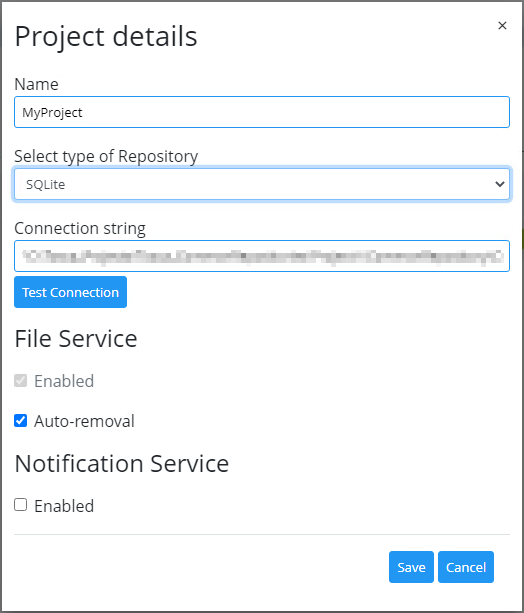Edit projects in the Tosca Administration Console
The Tosca Administration Console is key to an efficient and scalable testing infrastructure. You started your testing journey with a new project. Now, you can edit this project to tailor it to your testing needs.
This topic takes you through the editing process: what you can edit, what permissions you need, and how to edit a project in the console.
Understand what you can edit
You can change the following things:
-
Activate or deactivate Tricentis Notification Service and Tricentis File Service auto-removal. Please note that both features require additional setup outside of the Tosca Administration Console. For detailed information, see "Send data via Tricentis Notification Service" and "Configure auto-removal for Tricentis File Service".
-
Your project's base parameters: name and connection string.
Be careful with connection strings. Your connection string must always point to the same repository, which is the one you used when you created the project.
It's okay to migrate the repository database, for instance, if you switch MS SQL servers. In this case, edit the connection string so it points to the repository on the new server.
However, you can't change the connection string to a different repository. This breaks important links between test artifacts and workspaces. If you want to use a different repository, take this approach instead: delete the project and add a new project for the new repository.
Before you start
Check if you're an administrator. Only administrators can edit projects.
Edit your project
To edit a project in the Tosca Administration Console, follow these steps:
-
Open the console and select the
icon in the row of the project that you want to edit.
-
Make your changes. If you change the connection string, test the connection to activate the Save button.
-
Save your changes to the project.

Edit your project in the Tosca Administration Console
What's next
Once you're happy with your project configurations, assign user groups to the project. This gives your QA teams access to the project, so they can put your application's release readiness to the test.